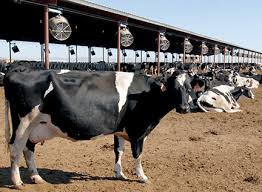CBZ transforms agriculture financing
Zimbabwe’s biggest lender, CBZ Holdings, has come up with a transformational lending system to the agriculture sector, which almost completely eradicates defaults on payments but also enhances the sector’s contribution to the economy.
This comes as the bank recorded a 876 percent spike in total advances to $29,4 billion during the year to December 30, 2020, with a significant chunk of these loans being accounted for by the agriculture sector.
Increased funding to the local agriculture is vital insofar as the sector remains the lifeblood of Zimbabwe’s economy. Under Government’s smart agriculture funding, banks are now playing a critical role in extending loans to farmers as it moves to involve private in financing this lucrative sector.
In an exclusive interview with Sunday Mail Business on Friday, CBZ chief executive Mr Blessing Mudavanhu, said the new financing model focuses on the entire agriculture value chain.
“We don’t actually give money to the farmer, we give them inputs equivalent to the money they would have applied for. We have partnered with suppliers such as Seed-Co, for example. So if you are a farmer wanting to grow maize and you need ‘x’ amount of seed, so we get exactly that which suits your space,” said the CEO.
“That also reduces the risk of people using the money for something else, so we control the whole value chain – the suppliers, the farmer, and the off-taker. All those are within sight, and they are our clients one way or the other. So to have that closed loop has actually been helping in mitigating against credit risk.”
The bank’s agriculture segment – CBZ Agro Yield, which was launched in 2019 – has been coming through in this regard. For FY2020, the segment recorded profit after tax of $298,9 million.
The agriculture business was a key contributor to the group’s 1 893 percent total income growth over the year under review.
CBZ chairman, Marc Holtzman, told The Sunday Mail during the same interview that the new lending system ultimately benefits the wider economy.
“This strategy is transformational as we have eliminated a lot of, either corruption or risk of repayment. We have also significantly reduced NPLs as a result of this and we have made it more efficient, which allows us to direct the resources to those worthy and deserving farmers who are producing and adding to the economy,” he said.
Zimbabwe is still largely agro-based, and will register significant gains from an efficiently working sector.
According to data from the Food and Agriculture Organisation (FAO), agricultural activities in Zimbabwe provide employment and income for 60 to 70 percent of the population.
It also supplies 60 percent of the raw materials required by the industrial sector and contributes 40 percent of total export earnings.
The sector also contributes approximately 17 percent to Gross Domestic Product (GDP).
Added Holtzman: “Agriculture is a vital economic sector not only for food security but also for the agro-industry, and it will remain our mandate to support and fund the sector. Many of Zimbabwe’s manufacturing companies feed from agricultural inputs.
“We also link our farmers to markets to ascertain product uptake and in many cases, this also comes with agronomic support. These in addition to the usual farm visits and crop monitoring work towards reducing default risk.”
The lender is also involved in mechanisation to reduce the rate of failure due to adverse weather patterns.
Meanwhile, in recent developments, CBZ Agro Yield has completed contracting of 49 377 hectares for the winter cropping season, accounting for 78 percent of the targeted 60 000 hectares.
Government has been sharping strategies to boost agriculture production and its efforts through command agriculture and presidential inputs schemes such as pfumvudza have seen the country yielding a bumper harvest this season.-ebusinessweekly.coz.w










